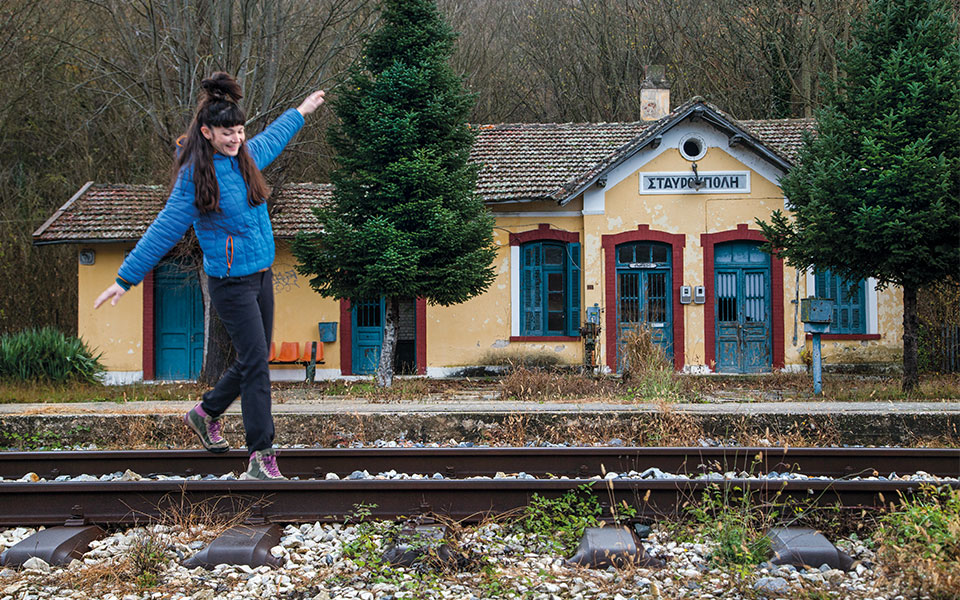The trail that meanders through the Nestos Straits is one of the most beautiful hiking routes in Greece; it also takes in one of the most important ecosystems in the country. The great Nestos River, which divides Macedonia from Thrace, rises in Bulgaria and flows into the Thracian Sea at a delta that has been declared a National Park. At times, it runs below impressive rock faces that give way here and there to coastal forestland, while the section from Stavroupoli to Toxotes parallels the train tracks. Bridges and rock-hewn tunnels create an unforgettable setting.
Until the outbreak of the pandemic, this stretch was part of a passenger train route that connected Alexandroupoli with Thessaloniki. Before that, the Nestos Environmental Train operated here, offering its passengers, mainly schoolchildren, a chance to learn about environmental sustainability while enjoying a unique experience. Until operation on these routes is reestablished, the tracks are only being used by freight trains and Hellenic Railways Organisation (OSE) track inspection vehicles. This is why we chose not to hike next to the train tracks – the old path the railroad workers used is now overgrown – but to follow the Nestos-Rodopi Trail path, part of the European E6 trail, instead.
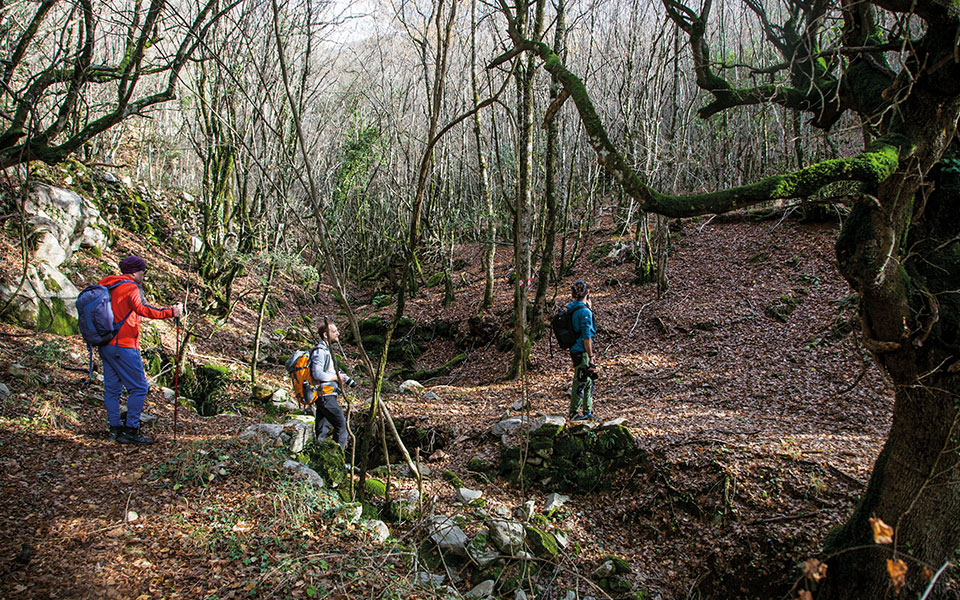
© Olga Charami
The great thing about this route is that, unlike with the train path, you can choose just how long you want to hike, as the trail passes through villages that are vehicle-accessible. The not-so-great thing is that it doesn’t always follow the river or the train tracks. In any case, since you can’t use the train here anymore, you’ll need to sort out your own transportation to get to and from the trail.
“We can enter from Stavroupoli, from Komnina or from Kromnikos. Take your pick,” Ilias Germantzidis tells me, pointing to the map he created for the educational programs he runs. With Rallou Vlachopoulou, he has founded Route, a cartography company based in Xanthi and is involved in the restoration of footpaths across Greece; for this one, they conducted the field study.
The Nestos-Rodopi Trail is long (it begins in Xanthi and ends in the forest village of Erimanthos, in the Rodopi region), but the section we’re talking about is only 20 kilometers and takes about 8 hours to complete. It’s the same footpath that locals have used for centuries for trading and commerce purposes, and it was particularly important to the growth of the area’s tobacco industry.
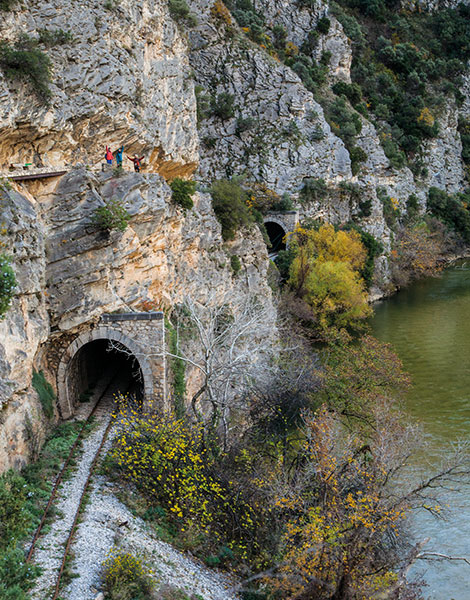
© Olga Charami
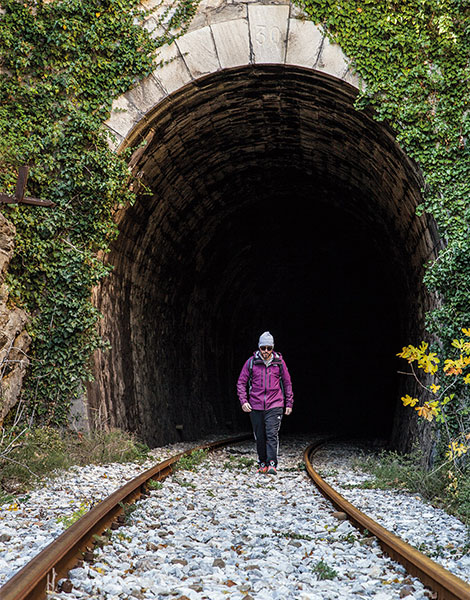
© Olga Charami
The first section, from Stavroupoli to Kromnikos (4 hours) traverses the long railway bridge of Stavroupoli, and it does follow the tracks, and the river, through a serene agricultural landscape. For us, however, it would make more sense to choose the section from the abandoned settlement of Kromnikos to the village of Galani (4 hours). At Easter, the old settlement of Kromnikos comes back to life briefly, as those residents of the village of Toxotes village who hail from here return to light candles at the church. Don’t be startled by the dogs that bark at you along the way; owned by the few stock breeders left in the area, they’re just pretending to guard. You should note that your hike will be a bit longer if you want to walk down to the train station at Kromnikos for a quick look, as it’s a slight detour.
In time, you’ll reach a plateau where you’re likely to see the famed wild horses of Nestos before you enter a thick forest filled with oak and plum trees, and other interesting plant species such as wild mushrooms. Here and there, you’ll be on what’s left of the old cobblestone path, and you’ll find yourself in the shade, too, thanks to the thick vegetation in the ravine. Ahead lie clearings that offer views of the Nestos River, where you’re headed. There are benches fairly often along the way – they were built during the footpath’s renovation, as were some wooden fences that, as might be expected, have since collapsed. The signage is also not helpful at certain key points, so take care (for instance, after Kromnikos, do not follow the paved path that comes after the large water tank; instead, go to the right and descend).
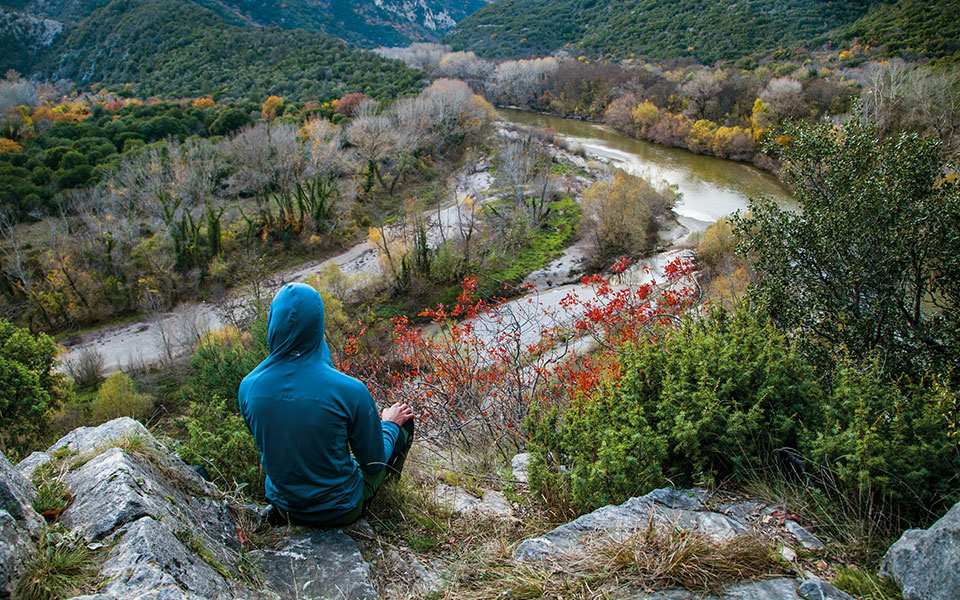
© Olga Charami
At some point, the path crosses the train tracks and you continue on the other side, approaching the Nestos River at last. The best part of the route is about to begin. At first, it seems like a jungle – the tracks here are hidden by underbrush – but soon you’ll be entering the famed Nestos Straits, also known as the Thracian Tempi. Here the path is wonderfully serpentine, going up and down and around as the rocks and the course of the river dictate. The railroad tracks and the impressive tunnels are right beside you, along with lush river banks, a sandy fringe at the water’s edge and the river itself, all part of a journey that you will not want to see end. About a kilometer and a half before the trail terminates, you’ll come across a popular scenic outlook, with one very un-scenic note; its proximity to Galani means that many people come here, and it seems they all throw empty coffee cups into an eternally overflowing garbage can.
At Galani, the end of the route, there’s a huge beach on the river with a parking lot, a canteen, and stands run by various outdoor activity companies. We’ve arrived in winter; in the summertime, it’s said to be packed with tents, barbecue grills and campfires.
What really needs to happen soon is for the passenger train to resume operations, and for the path that runs parallel to the tracks to be reopened. (Among other highlights, it skirts the abandoned village of Livera, whose railway station once operated as a guesthouse.) The uncollected rubbish and the summer crowds at Galani notwithstanding, this hike is definitely one of the loveliest experiences to be had in Greece, and has all the prerequisites to be a popular tourist trek.

